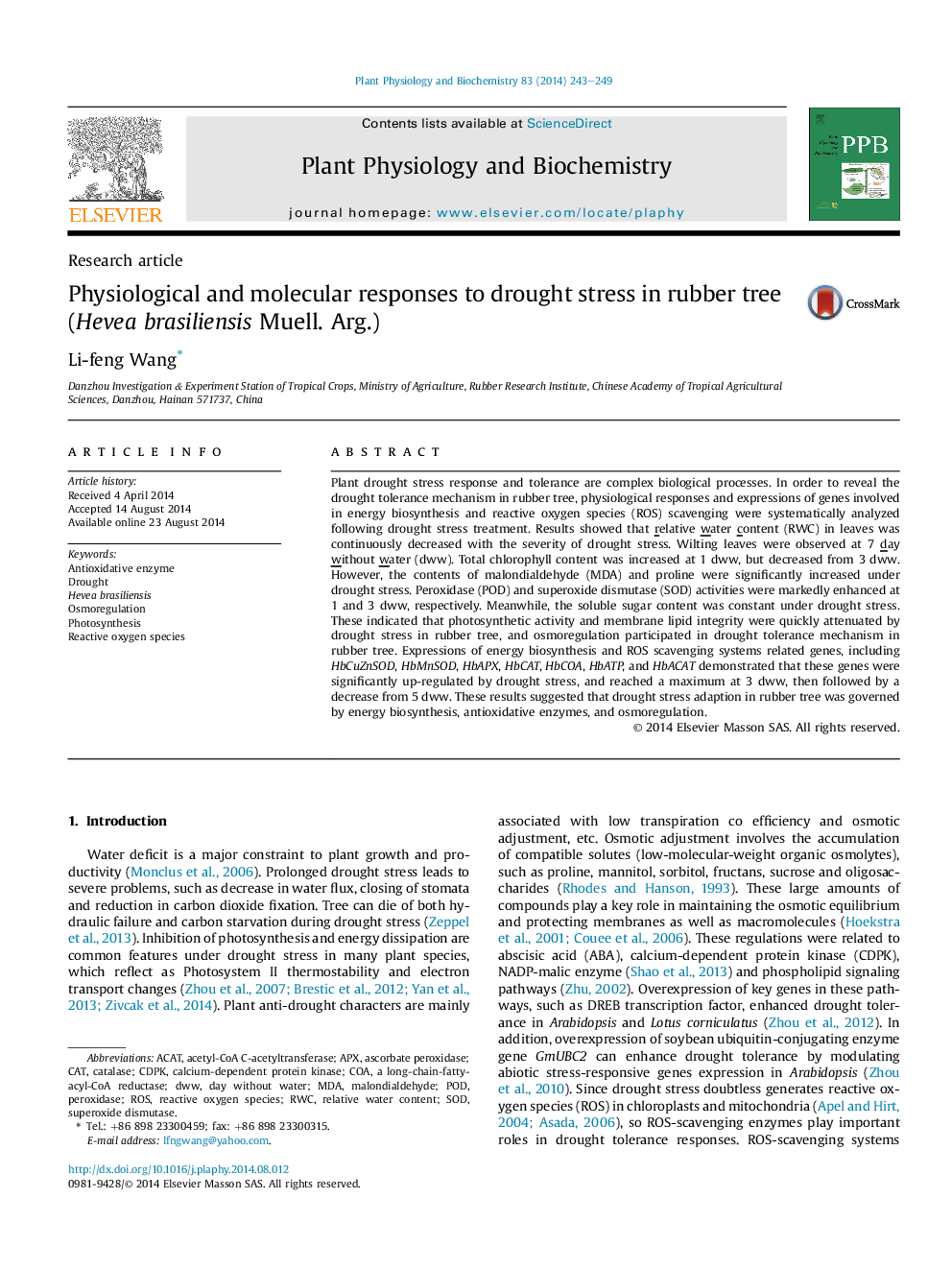| کد مقاله | کد نشریه | سال انتشار | مقاله انگلیسی | نسخه تمام متن |
|---|---|---|---|---|
| 2015777 | 1541938 | 2014 | 7 صفحه PDF | دانلود رایگان |

• Physiological and molecular changes of rubber seedlings under drought were studied.
• Drought induces ROS related gene expression only before 3 day without water.
• Genes form different metabolic pathway work synchronously.
• Rubber tree must rewater before 3 day.
Plant drought stress response and tolerance are complex biological processes. In order to reveal the drought tolerance mechanism in rubber tree, physiological responses and expressions of genes involved in energy biosynthesis and reactive oxygen species (ROS) scavenging were systematically analyzed following drought stress treatment. Results showed that relative water content (RWC) in leaves was continuously decreased with the severity of drought stress. Wilting leaves were observed at 7 day without water (dww). Total chlorophyll content was increased at 1 dww, but decreased from 3 dww. However, the contents of malondialdehyde (MDA) and proline were significantly increased under drought stress. Peroxidase (POD) and superoxide dismutase (SOD) activities were markedly enhanced at 1 and 3 dww, respectively. Meanwhile, the soluble sugar content was constant under drought stress. These indicated that photosynthetic activity and membrane lipid integrity were quickly attenuated by drought stress in rubber tree, and osmoregulation participated in drought tolerance mechanism in rubber tree. Expressions of energy biosynthesis and ROS scavenging systems related genes, including HbCuZnSOD, HbMnSOD, HbAPX, HbCAT, HbCOA, HbATP, and HbACAT demonstrated that these genes were significantly up-regulated by drought stress, and reached a maximum at 3 dww, then followed by a decrease from 5 dww. These results suggested that drought stress adaption in rubber tree was governed by energy biosynthesis, antioxidative enzymes, and osmoregulation.
Journal: Plant Physiology and Biochemistry - Volume 83, October 2014, Pages 243–249